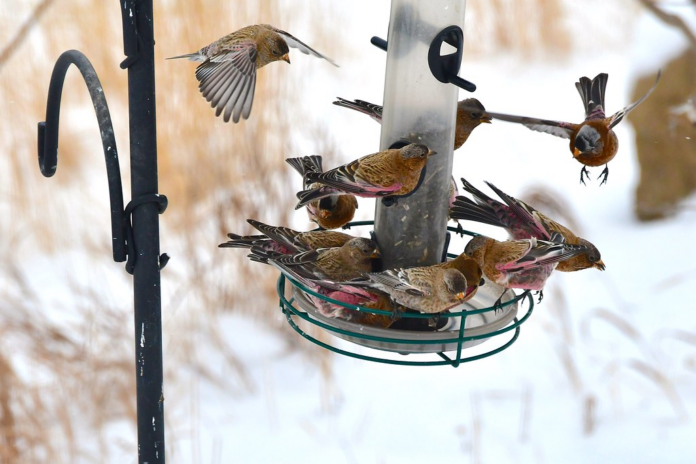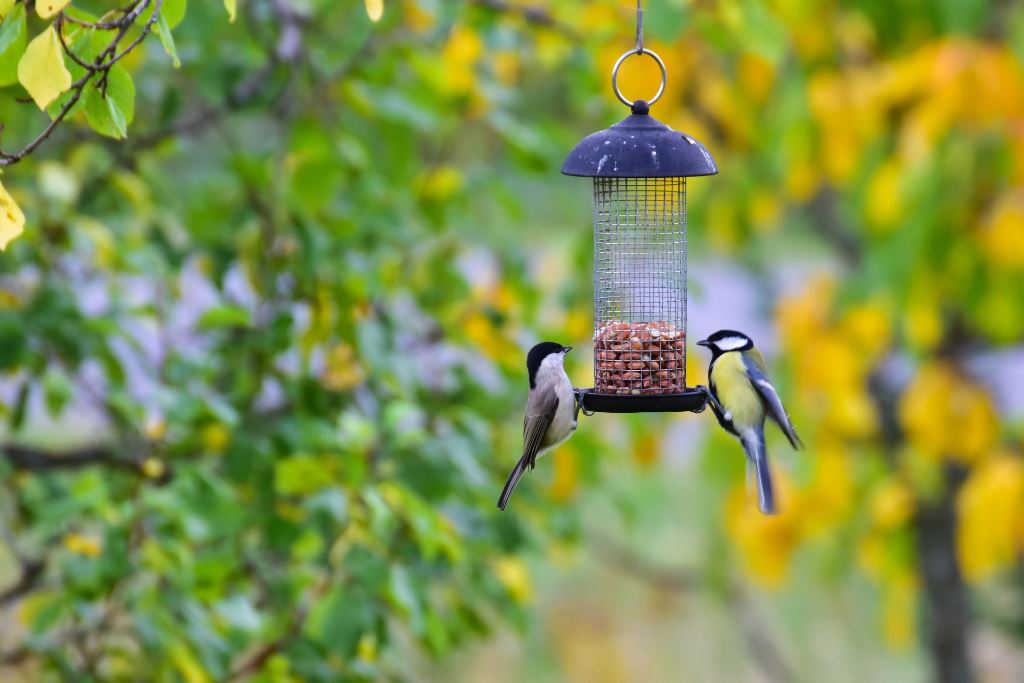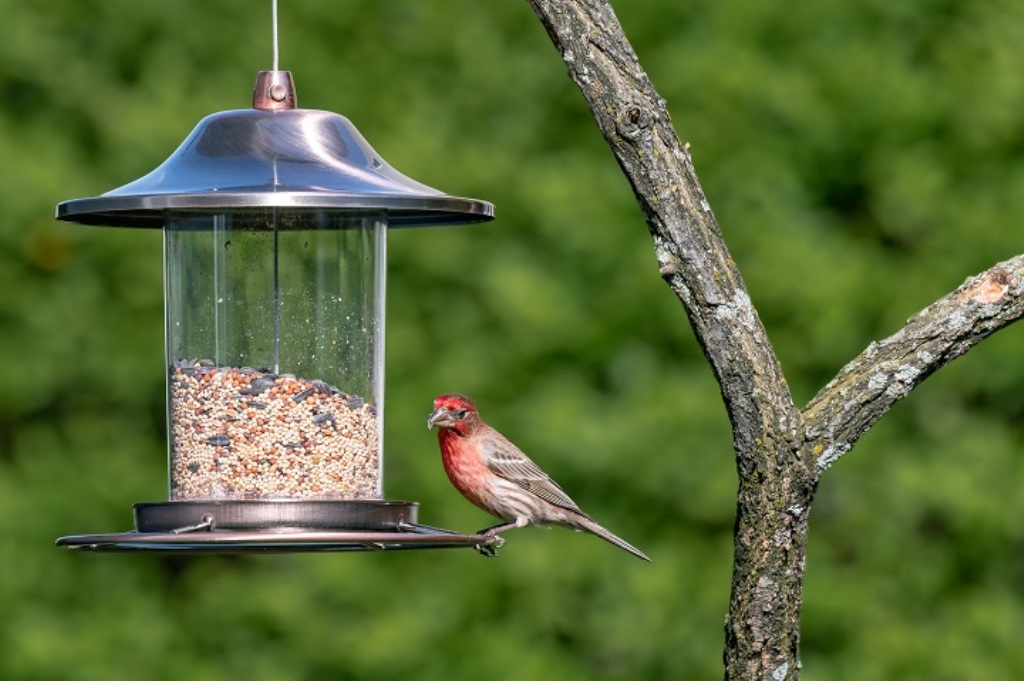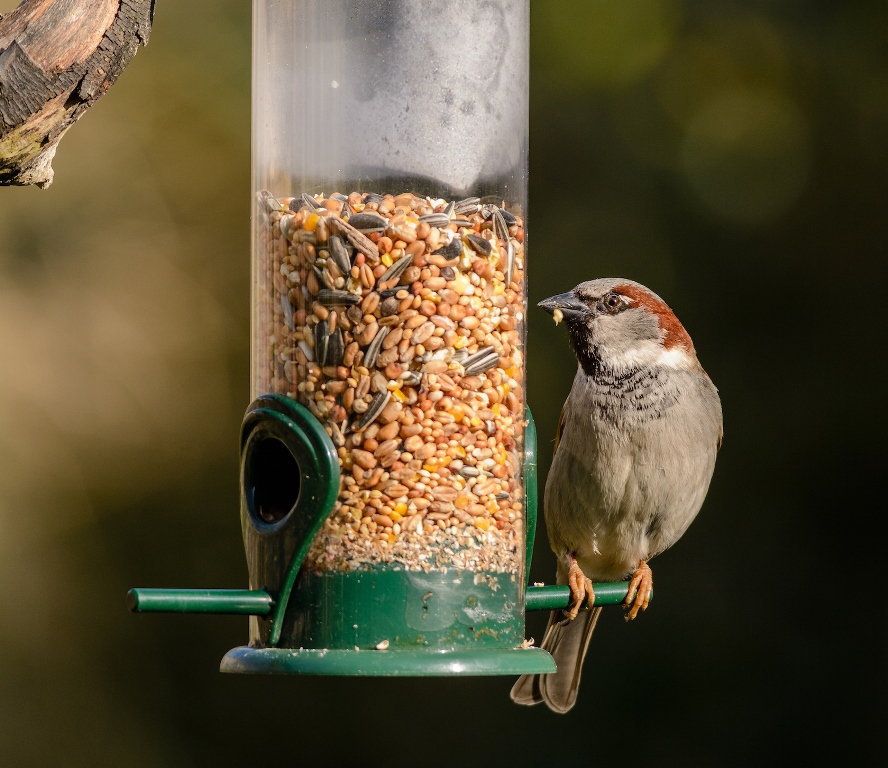Finches are tiny to medium-sized passerine birds that come in hundreds of different species. They have notched tails, long bodies, pointed wings, and round heads with triangular beaks.
Who wouldn’t want these quiet, low maintenance, and beautifully plumaged birds around?
Not you obviously.
Better Your Feeder
Use Finch Feeders
There’s no denying that finches would eat on any feeder.
But if your goal is to allure them, then you’ll be needing to do your best in providing them only the best finch feeders.
Feeder Socks
Finches are small birds, which allows them to access the seeds inside loosely woven socks. These feeders are reusable, but you’ll have to replace them after 3-5 refills since they’ll be worn out.
Nyjer Feeders
They would go crazy for nyjer seeds! So you can double up the excitement by providing them nyjer feeders too. Most of the time these feeders solely lure in finches, they have tiny feeding holes above their perches which are perfect for their tiny beaks.
Other Feeders
Any feeder, plastic, or metal (as mentioned earlier) would serve them well. However, they seem to fancy feeder tubes, finch stations, and wire feeders.
Keep It Maintained
Because of their great memory, finches would never come back to your yard after encountering a poorly maintained feeder. Which is something you don’t want to happen.
Always Fill Your Feeders
Like most birds, finches tend to like seeing a continuous supply of food, and if ever they see your feeder empty, they won’t like it as much as they did before.
You’ll be needing to fill it up all the time. You can either mix the old seeds (if they’re still fresh and dark) with the new ones or put them on top. But if ever the remaining seeds look moldy and pale, you’ll have no choice but to dispose of them since the finches would 10/10 ignore them.
Avoid Any Moisture
Finch feeders, especially plastic and the ones with very tiny feeding holes, prevent air circulation. This means that moisture can easily form or get inside.
Rain or mist can clog the feeders with moldy seeds making it hard for finches and other birds to eat. It is crucial to add a rain guard to the feeder to prevent moisture from entering or forming making the seeds wet and clumpy.
Provide The Best Food
Having the right food around is key to bringing in more of any bird to your yard, whether you are attracting hummingbirds or finches.
Their Favorites
Seeds that are dark and high in oil content are your best option. Sunflower, aster, and most definitely Nyjer seeds would surely lure them in.
The combination of nyjer seeds and socks tend to appear tempting to finches, however, a finch blend (nyjer and crushed sunflower chips) are quite effective too.
Mixing Seeds And Weeds
There’s a huge chance that finches won’t come to your feeders even if you already offer them the best seeds. This is because they don’t always recognize it as a food source.
These birds love weeds, so you can use these to help them notice the seeds inside your feeders. Try putting dandelion and thistle along with the seeds.
Fresh Seeds Only
As mentioned earlier, they hate moldy, stale, and most especially rotten seeds. They’re so picky that they wouldn’t even eat seeds that have lost their color.
And it’s definitely not easy to keep throwing and purchasing seeds all the time. What you can do to keep their seeds fresh is to refrigerate them and make sure no moisture is present.
Place Your Feeder Rightly
Near Tall Trees
This is only applicable to those who already have tall trees planted near their yard, it isn’t really necessary to plant trees if you don’t.
It’s ideal to place your feeders near tall trees since these birds love perching and nesting in them, which will eventually result in more finches near you.
Far From Other Feeders
Finches may appear friendly to other visitor birds that are in their size or smaller. But bigger birds or a crowd of small ones scare them and keep them away.
You should place your finch feeder away from the other feeders so that the finches won’t need to worry about their safety or about blending in with the others.
Nearby A Bird Bath
Birds have an equal need for water as they do to food. And not all yards offer water. So there’s a huge chance that while finches forage for water, they may accidentally run into your feeder and notice it as a reliable food source.
Put your feeders near a birdbath so that they could drink after eating, rinse their beaks, and remove the dust and parasites in their feathers too.
Where They’ll Feel Safe
Safety is the second most important thing for birds (with health being the first). You wouldn’t want to eat while worrying about your safety at the same time now, would you?
Just like any bird, finches would come back over and over again to a place that offers a consistent supply of food and is a secure environment too. You might not be aware of it, but your yard is filled with predators or even just the danger of them attacking. Also, your or your neighbor’s cat and the rodents around you can harm them too.
That’s why you should never put any feeder out in the open. You can try placing them near shrubs and trees so that they would have an easy hideout and would also feel closer to their habitats. However, the feeder shouldn’t be too close to them to avoid rodents from using it as an advantage to hop or get on the feeder easily.
Conclusion
To make things short, consistency is the key. If you clean, fill, and watch over your feeders consistently, then you can expect finches coming in more often.





















